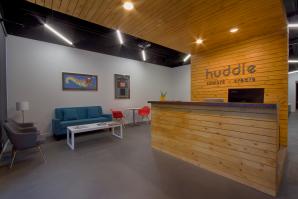Northern San Joaquin Valley brings a number of images to mind — municipal bankruptcy, meandering Delta sloughs, vineyards, dairies, stubbornly high unemployment alongside rapid housing growth. Maybe asparagus.
And what images does Silicon Valley conjure? Google, Apple, Facebook, Oracle, HP, Cisco and on and on? Mainstays of the world’s hub of technology and innovation?
Did a glimpse of Stockton appear in that mix? Well, if the San Joaquin Partnership’s campaign to rebrand the Stockton-Tracy-Lathrop metro area as Greater Silicon Valley works out, it soon will.
It’s not as far-fetched as it may seem. Each weekday morning, 65,000 Stockton-area residents join the commute to workplaces in the South Bay. In cars and busses on interstates 580 and 205, they make their way over Altamont Pass, through the Livermore Valley and across Fremont and Milpitas to San Jose, Santa Clara and Palo Alto. Thousands of others ride Altamont Corridor Express (ACE) trains, which now make four daily round trips between Stockton and San Jose.
Each evening those weary commuters return home from their odyssey, have a meal, kiss the kids goodnight and prepare to rise early the next morning to repeat the cycle.
Mike Ammann, president and CEO of the San Joaquin Partnership, saw this daily migration across Altamont Pass and thought: Stockton and environs may be a bit at the edge, but the region is a key link in the Silicon Valley economic chain. So he came up with the Greater Silicon Valley brand and gathered research that nailed down the connection. Ammann began preaching a new future for San Joaquin county as a megaregion of 24 million people — a massive, interlinked, economic engine.
As the red-hot economy in the inner Bay Area overflows its traditional boundaries and creeps through the Tri-Valley area of San Ramon, Pleasanton and Livermore, it is beginning to lap over the rim of the Altamont Pass toward Tracy, Lathrop and Stockton. Ammann’s rebranding seems to be inching closer to a reflection of reality.
Last September, the median home price in the San Jose metro area was $800,000 — a 19-percent rise since last year, according to real estate site Redfin. In San Joaquin County the median home price was $270,000. Office rents in Mountain View, home of Google’s headquarters, are $97 a square foot, according to JLL; in downtown Stockton, according to Colliers International, Class A office space rents for less than $20 per square foot.
To respond to the market, the San Joaquin Partnership opened a Greater Silicon Valley corporate recruitment office in Santa Clara, within the offices of TiE Silicon Valley, a global organization of entrepreneurs.
Ammann says the Bay Area office has been a strategic foothold for San Joaquin County. Many Bay Area leaders and entrepreneurs, he says, are beginning to accept the region as “an extension of Silicon Valley.”
Sitting in his Stockton office, Ammann tells a tale of how far the branding goes. When dining with a Bay Area contact, he says he always recommends something from the vineyards of “the Silicon Valley wine region.” He smiles. “Lodi, that is.”
In Lathrop, near the split of I-5 and I-205, construction is finally underway at the long-awaited River Islands community, said to be the largest new master plan in Northern California. If it reaches build-out, the development on Stewart’s Tract will have 11,000 new residential units, downtown retail, parks, recreation trails and nine new schools. In two decades, Lathrop’s population is projected to double to 45,000.
The commercial centerpiece of the project is a 4-million-square-foot technology campus on 300 acres, designed specifically for users from Silicon Valley. According to River Islands developer the Cambay Group Inc., the technology center is fully entitled, with vested land-use rights and individual parcels established, with water, power and renewable energy in place.
Susan Dell’Osso, the project director at River Islands, describes the creation of a work/life-friendly world in the southern San Joaquin Delta, 64 miles from Google headquarters in Mountain View. The same care and attention to detail being paid to the technology center, she says, is being paid to the neighborhoods and retail development as well.
“We’re creating a technologically integrated, sustainable place, planned for people and companies that want to put down roots,” Dell’Osso says.
The Cambay Group, a wholly owned subsidiary of the UK’s Somerston Holdings, has established a $55 million fund to offset the costs of capital construction or start-up operations for qualified businesses.
“The Bay Area is outgrowing its footprint,” Dell’Osso says. “More firms are looking for the most logical extensions within the region. River Islands is in the center of Northern California’s growth.”
Getting River Islands into the construction phase has not been easy. Environmental battles over habitat and flood protection with the Sierra Club and the National Resources Defense Council, among others, began at the project’s conception in 2003. Dell’Osso says the Cambay Group and the formerly dissenting environmentalists have successfully worked together to find common ground and create a plan that works for all parties, including widening levees to allow for more vegetation and enhanced flood control, and dedicating 100 acres as habitat for endangered rabbits.
The economic meltdown also set the project back a decade. The median home price in San Joaquin County in 2006 reached $420,000 before plummeting to $150,000 two years later as the recession took hold. Housing permits in the county, 10,000 in 2005, shriveled to 765 in 2008. While waiting out the economic downturn, developers spent more than $300 million preparing to develop River Islands, including the construction of a $17 million bridge over the San Joaquin River. Now, they say, they are ready and eager to build.
Meanwhile, on the other side of Interstate 205 in Tracy, Prologis International broke ground in early November on a 1-million-square-foot phase of its Prologis International Park of Commerce, a logistics center with the potential to reach 20 million square feet at build-out.
Tracy, with a population of nearly 90,000, is already home to a new Amazon fulfillment center that employs 1,000, as well as distribution centers for Safeway and Home Depot, among others.
Responding to housing pressures from Silicon Valley and the inner Bay Area, new home developments are springing up in San Joaquin County’s seven cities — Tracy, Lathrop, Ripon, Escalon, Manteca, Stockton and Lodi.
At the Tracy Hills development, 5,500 homes are proposed; nearby the Surland Cos.’ Ellis community calls for 2,500 more.
But not all the growth pressure in northern San Joaquin County is coming from Silicon Valley proper. San Joaquin is growing from within — from 2000 to 2012, the population increased 24 percent to 700,000.
And just west over the steep grade of interstate 580, the population and economy continue to boom.
An October report from the Bay Area Council Economic Institute points to rapidly increasing employment growth in the Tri-Valley area, centered around the Alameda County cities of Livermore, Pleasanton, Dublin and the Contra Costa County communities of San Ramon and Danville. It is only 21 miles from Tracy’s city hall to Livermore’s city hall.
Technology jobs in the Tri-Valley region have increased 86 percent since 1994, the Council reports. The area added nearly 40,000 jobs across all sectors from 2000-2012. The Tri-Valley population has grown 20 percent since 1994.
The Lawrence Livermore National Laboratory employs nearly 6,000 people and has a $1.5 billion budget. Its sister facility, Sandia National Laboratory, which is also located in Livermore, employs 1,200. Originally founded to develop and safeguard the nation’s nuclear arsenal, both labs now spin off start-up companies and a large number of commercial applications.
But there’s a lot more than supercomputers and lasers at work in the local economy. Chevron employs 3,500 in San Ramon. Other large companies with a presence in the Tri-Valley area include Oracle, SAP, AT&T, Cisco, Sage Software, Kaiser Permanente, Clorox, Pacific Gas and Electric Co., United Parcel Service, General Electric, Toyota, EMC, Roche Molecular Systems, Robert Half International, Epicor, IBM and Accenture.
Commute volumes from the Tri-Valley area (the “Tri” refers to the San Ramon, Livermore and Amador valleys) to San Francisco, Santa Clara and San Mateo counties have increased 66 percent since 2007, the Council reports. Daily delays along the 580-corridor have increased 26 percent since 2011.
The Bay Area Council is advocating for a financing measure that would spend $840 million on highway improvements and a BART extension into Livermore.
With all this business and residential growth at its borders, northern San Joaquin County — Greater Silicon Valley, if you will — is poised to grow from a less-expensive offshoot of the Silicon Valley and fully tap into the economic motherboard of the Bay Area.
Recognizing that fact, in 2013 the U.S. Census Bureau added Stockton and Lodi to the San Jose-San
Francisco-Oakland Combined Statistical Area. (A CSA is the next-larger snapshot of a region, one-up from an MSA, or Metropolitan Statistical Area.) The CSA’s population in 2013 was 8.5 million, the No. 5 CSA in the country, trailing only New York, Los Angeles, Chicago and Washington, D.C., in population.
As companies seek to be closer to their workforce, Stockton, Tracy, Manteca and Lathrop all inevitably become attractive, lower-cost alternatives for expansion and development.
Mike Ammann at the San Joaquin Partnership is making sure the welcome mat is out, the porch light is on and that the region is ready to attract and greet potential newcomers. As the builder of a branding campaign that once evoked skepticism, Ammann seems increasingly comfortable with the fit: Greater Silicon Valley, indeed.
Recommended For You

Points of Progress
Development booms as part of San Joaquin rebranding strategy
Here’s a look at key developments in the northern San Joaquin Valley, which has dubbed itself “Greater Silicon Valley.”

Stockton Cooperation
Huddle hopes to foster more than coworking in downtown Stockton
David Garcia, Stockton born and bred, has a background in urban policy and planning and has called cities like Baltimore and Washington, D.C., home. So when he and Tim Egkan co-founded Huddle, a new coworking space in downtown Stockton that held its soft opening last June, he knew change was possible. But that doesn’t mean he thinks it will be easy.

Starts and Stops
San Joaquin has seen its share of change
It was in 1989 that the San Joaquin Business Council formed to envision and outline an economic development and prosperity plan for its county. Called Vision 2000, the strategic plan and its backers, including the newly created San Joaquin Partnership, sought to add tens of thousands of jobs to the region by removing barriers to business development and promoting the relocation of companies to San Joaquin.

Got Storage?
California can't conserve its way out of a drought
Years of drought have baked away some of the divisions inside California’s Capitol, drawing opposing parties together in an effort to find solutions to the state’s ongoing water storage and conveyance problems.




Comments
Notes